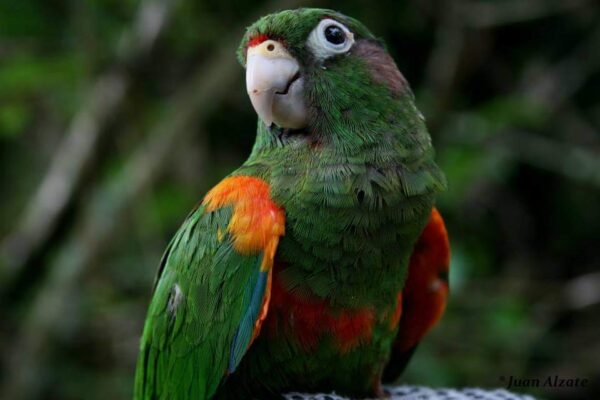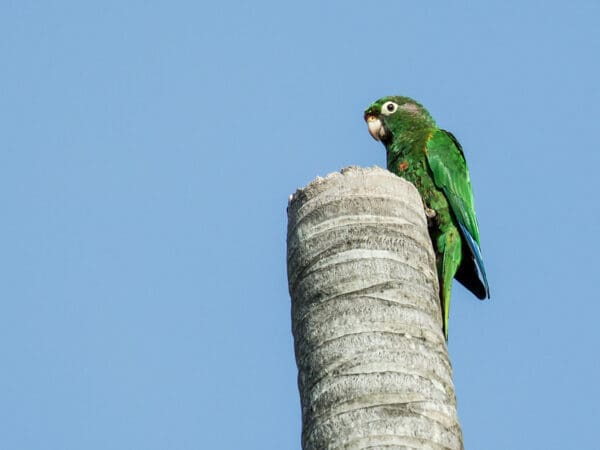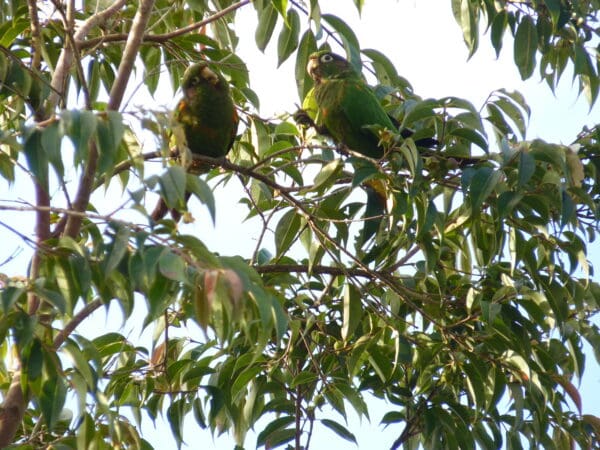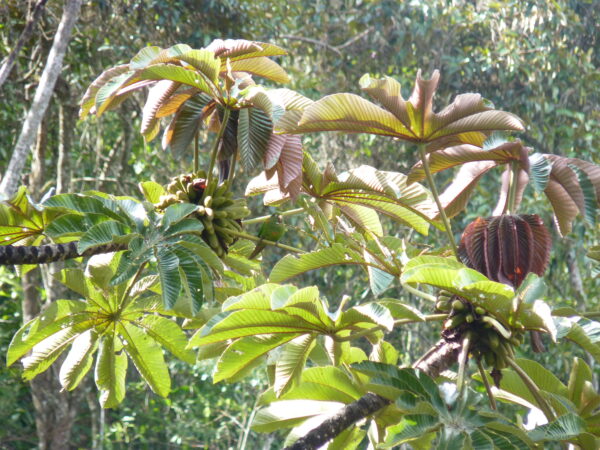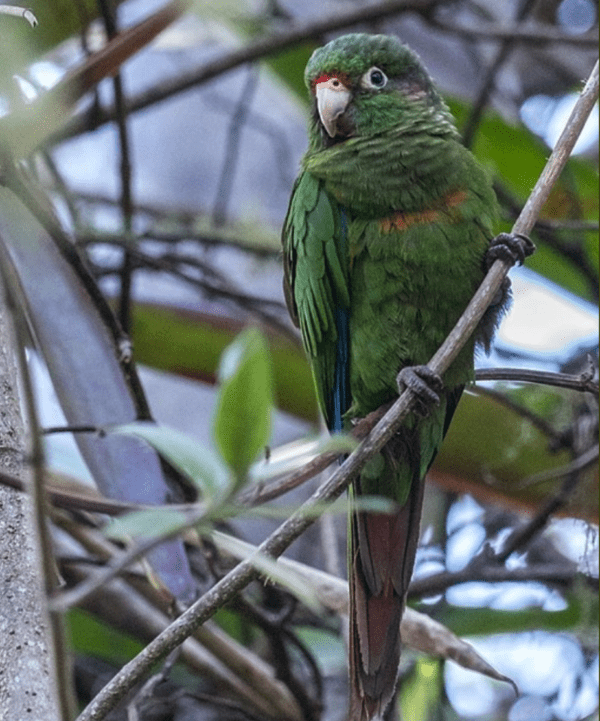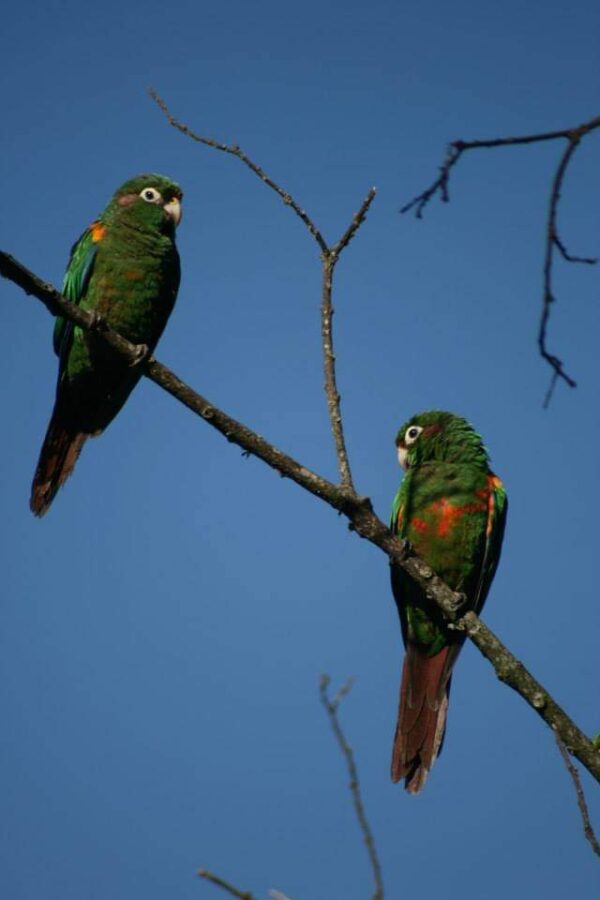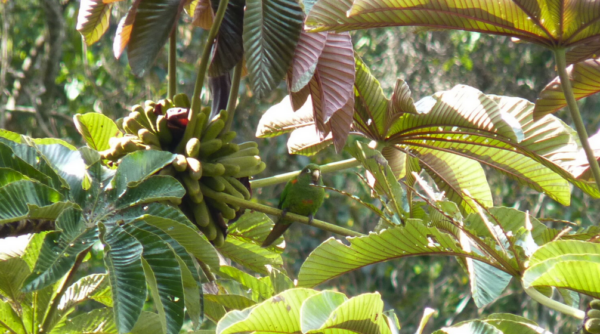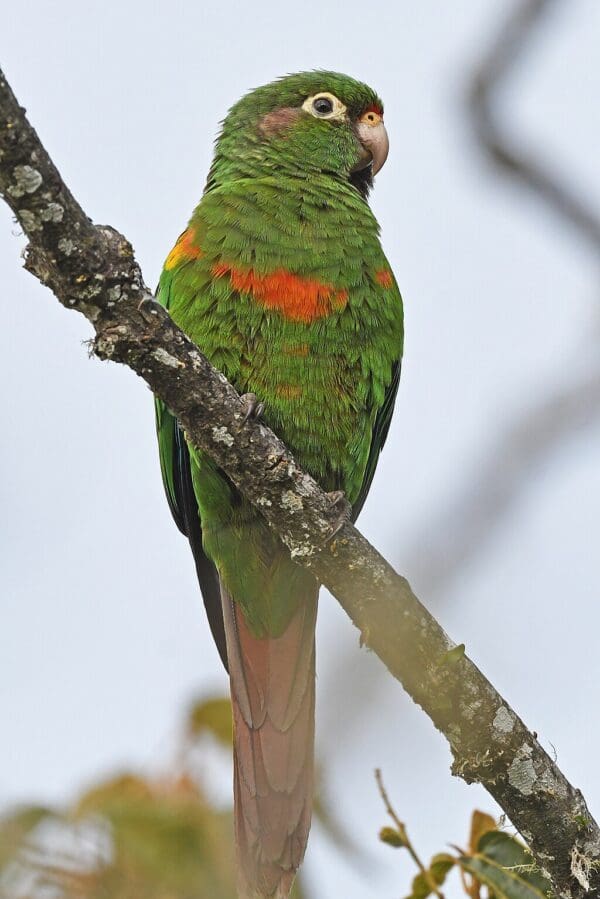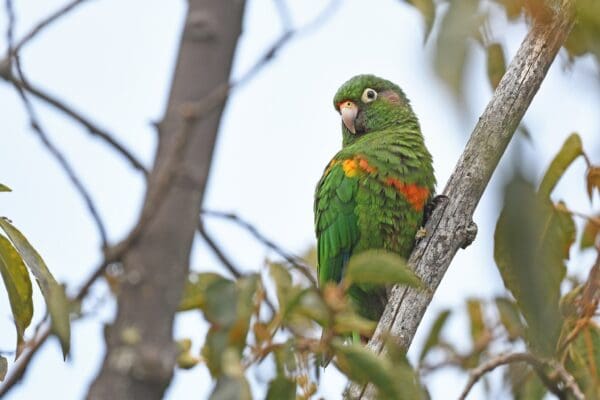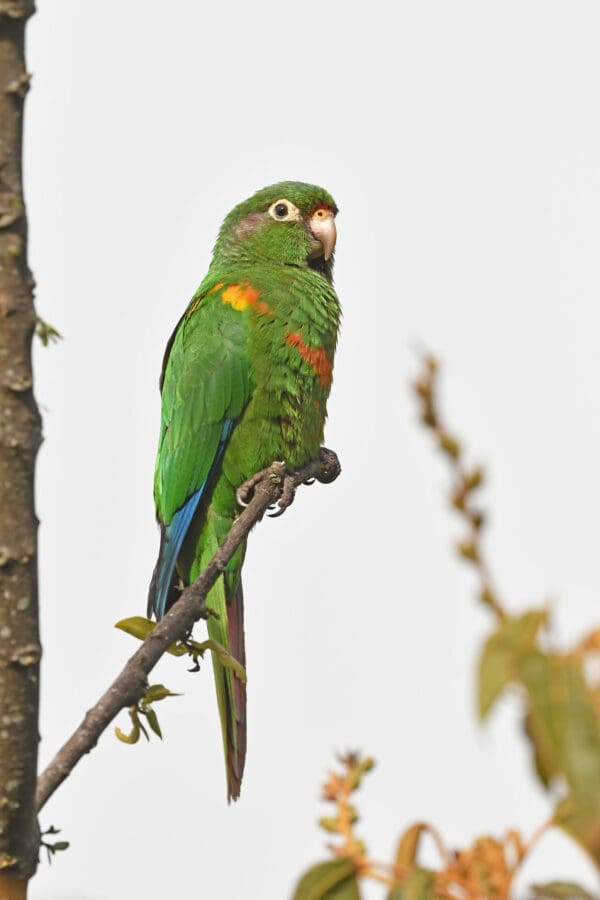Santa Marta Conure
Also known as:
Santa Marta Parakeet
Also known as:
Santa Marta Parakeet
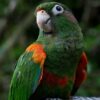
![© Nick Athanas [CC BY-SA 2.0] via Flickr A wild Santa Marta Conure feeds in a tree](https://parrots.org/wp-content/uploads/2023/01/wpt_Santa-Marta-Conure_1356-4-100x100.jpg)
![© Nick Athanas [CC BY-SA 2.0] via Flickr A wild Santa Marta Conure perches atop a tree trunk](https://parrots.org/wp-content/uploads/2023/01/wpt_Santa-Marta-Conure_1356-3-100x100.jpg)

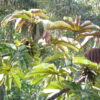
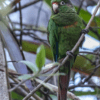
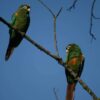
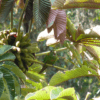
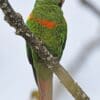
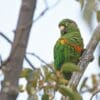
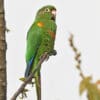
DID YOU KNOW?
The Santa Marta Conure is one of the least typical of the Pyrrhura species in its colouration. The scalloped breast markings found in so many other Pyrrhuras is missing, and its abdomen is bright orange/red.

Pyrrhura

viridicata
Size:
25 cm (9.75 in)
Weight:
Not recorded.
Subspecies including nominate:
one
Colour Adult:
Both adults in general dark green; purple/brown ear coverts; orange/red abdomen; yellow bend of wing, carpal edge and lesser underwing coverts with orange/red markings; green tail. Eye ring bare and white. Eye brown.
Colour Juvenile:
Juveniles have a green body with brownish ear coverts and a small red patch on their forehead as in adults. The red band is absent in juveniles and it is barely visible in immatures.
Call:
Calls are similar to those of the Painted Conure (Pyrrhura picta): in flight a coarse, strong series of rapid, staccato notes pik-pik-pik.
More Information:
Content Sources:
CITES
Avibase
BirdLife International
Cornell Lab of Ornithology/Birds of the World
A Guide to Parrots of the World, Juniper and Parr, 1998
Parrots of the World, Forshaw, 2006. 2010 edition
Vanished and Vanishing Parrots, Forshaw, 2017.
Parrots: Their Care and Breeding, Low, 1986.
Lexicon of Parrots, Thomas Arndt.
Captive Status:
Not commonly found in captivity.
Longevity:
—
Housing:
Inside enclosure 1 x 1 x 2 m (3.3 x 3.3 x 6.5 ft) with outside flight (in warmer climates) 4 x 1 x 2 m (12 x 3.3 x 6.5 ft).
Diet:
Fruit such as: apple, pear, orange, banana, papaya, mango, cactus fruits, pomegranate; berries such as: blueberries, mountain ash, Pyracantha and elder; vegetables such as: carrot, celery, green beans and peas in the pod; green leaves such as: Swiss chard, lettuce, sowthistle, dandelion, chickweed; seed mix such as: safflower, oats, buckwheat, millet, canary grass, some sunflower (dry or sprouted) and a little hemp; millet spray; vitamin and mineral supplements; complete kibble.
Enrichment:
—
Nest Box Size:
Vertical box 10″ x 10″ x 28″ (25.4 cm x 25.4 cm x 70 cm)
Clutch Size:
4-5 eggs.
Fledging Age:
—
Hatch Weight:
—
Peak Weight:
—
Weaning Weight:
—
World Population:
1800-3200 mature individuals, decreasing.
IUCN Red List Status:
Endangered
CITES Listing:
Appendix II
Threat Summary:
The species greatly depends on intact forest; estimates of habitat loss range from 30% to 80%. The main threats to habitat are food agriculture, livestock farming, logging and brush fires, whose impacts are ongoing. Is not affected by illegal trade, but there are records of hunting in the Río Frío valley, in San Pedro de la Sierra and by indigenous people from the Kogi community. Some birds are occasionally shot as crop pests.
Range:
Sierra Nevada de Santa Marta, NE Colombia.
Habitat:
Found from 1800-2800 m (5904-9184 ft) in cooler humid mountain forest and forest edge, mainly in subtropical zone. May also occur in grass and bracken covered slopes with mountain shrubs.
Wild Diet:
Diet includes fruits and seeds of Alchornea triplinervia (Euphorbiaceae); fruits of Croton bogotanus (Euphorbiaceae), Miconia (Melastomataceae), Ficus aff. tequendamae (Moraceae), Morella pubescens (Myricaceae), Myrcia (Myrtaceae), seeds of Sapium and Tetrorchidium rubrivenium (Euphorbiaceae), Clusia multiflora (Clusiaceae), Brunellia integrifolia (Brunelliaceae), Cupressus sempervirens (Cupresaceae); flower clusters of Lepechinia bullata (Lamiaceae), Casteneida santamartensis and Vernonia canescens (Asteraceae). Also flowers from Eucalyptus aff. globulus (Myrtaceae), Miconia, leaves of Podocarpus oleifolius (Podocarpaceae), Guettarda aff. roupaliefolia (Asteraceae) and Usnea lichens.
Ecology and Behaviour:
Is usually seen in flocks of up to 20 individuals in fast, acrobatic flight across open country between forest patches. Roosts communally in a tree hollow or hidden in foliage at night.
Clutch and Egg Size:
4-5 eggs.
Breeding Season:
Two peak periods from December-May and May-October. Nests exclusively in dead Wax Palms Ceroxylon ceriferum.
